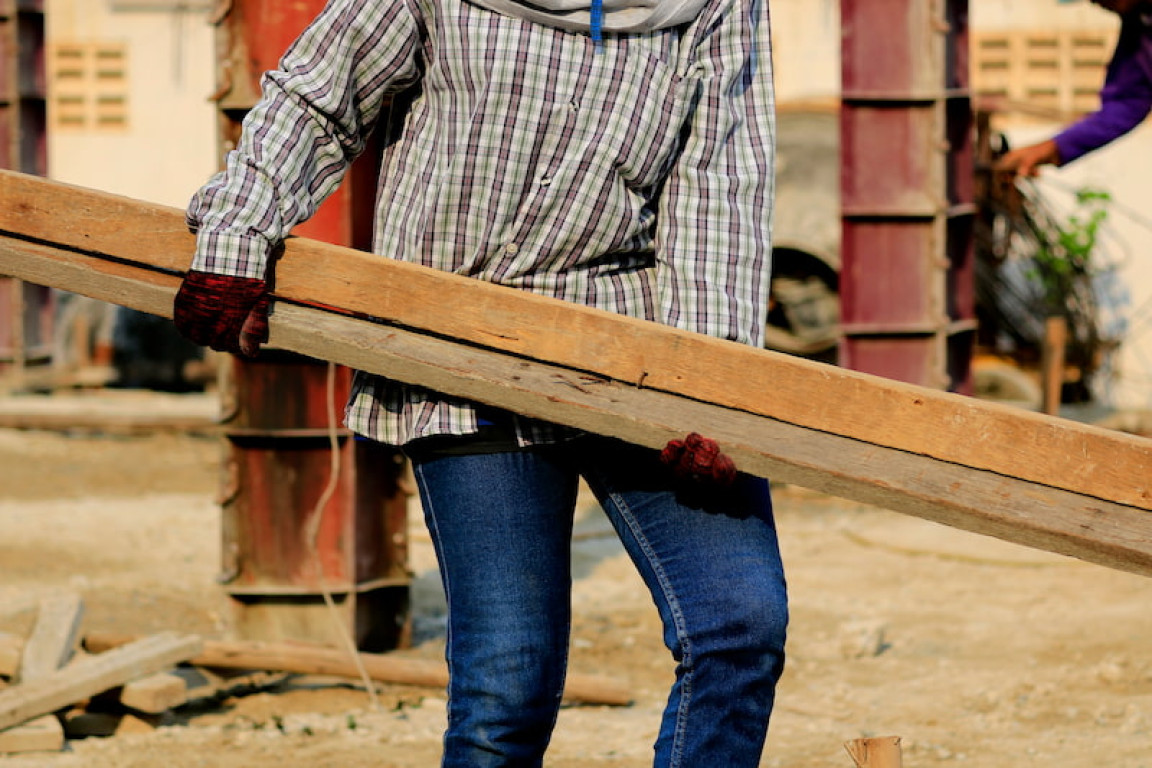In construction, precision and accuracy are key to producing a solid and quality building. One of the foundations to achieve this is by installing batter boards in the early stages of construction.
Batter boards are boundary stakes that ensure basic structures, such as concrete, can be built with precision. This article will delve into batter boards, their types, criteria, and how to install them. Check out the full explanation below!
What is a Batter Board?
A batter board is a stake that acts as a barrier to determine points in a construction project. Indonesian construction workers refer to a batter board as a bouwplank. The term comes from the Dutch and means “building board” or “construction board”.
In construction, wooden boards for batter boards have specific dimensions and thicknesses. They are installed horizontally and vertically to mark the boundaries of the area. Using batter boards, construction workers can accurately determine important points, such as foundations, columns, and walls. It helps ensure a smooth construction according to plan and reduces the risk of errors.
Batter board installation plays a crucial role in ensuring alignment and accuracy of construction. It helps maintain the quality of the resulting structure. In addition, batter boards allow workers to leave out position or distance measurement and calculation of the foundation repeatedly.
5 Types of Batter Boards
Batter boards are divided into several types depending on their materials, such as wood and composite. Each type offers its advantages. Here are some types commonly used in building projects:
1. Wooden Batter Boards
Wooden batter boards are often used for wall, floor, or roof placement. They are light in weight and easy to cut, which makes them more flexible for various project needs.
2. Concrete Batter Boards
Concrete batter boards are often used to mark the placement of walls, foundations, and other concrete structures. With high strength and stability, concrete batter boards suit construction projects that require extra strength.
3. Metal Batter Boards
Metal or steel batter boards, such as aluminum or galvanized steel, provide extra durability and high strength. This type of corrosion-resistant board can withstand heavy loads. This type of batter board fits construction projects that prioritize durability and strength.
4. Plastic Batter Boards
Plastic batter boards have strong and durable properties. They're often used due to their flexibility and resistance to weather changes. Batter boards made of plastic have resistance to termite and mold attacks. Compared to wooden or concrete batter boards, they're lighter in weight.
5. Composite Batter Boards
Composite batter boards are made of several materials, such as wood fibers or reinforced plastic fibers. This type of batter board tends to be stronger and more weather-resistant. This composite material also usually has a longer lifespan than regular wooden batter boards.
Batter Board Installation Criteria
Before installing a batter board, you must know the required criteria. For that, check out some of the following criteria:
- Stability: Ensure that the board does not wobble because of several factors in construction, such as vibrations during foundation excavation.
- Distance from the excavation point: Place the board at least 1 meter away from the foundation excavation point to avoid disturbance due to the excavation process.
- Boundary marks or points: Place a mark or point on the batter board as the boundary of the building.
- Pull the thread as the center line: Pull the thread on the batter board as the centerline of the foundation and brick wall, and make sure the placement is by the pattern on the plan.
- Uniformity: Ensure that all batter boards are uniformly placed with their tops aligned in the same horizontal plane.
How to Install Batter Boards
A careful batter board installation can help you avoid mistakes that can affect the accuracy and quality of construction. Check out the following guide to installing a batter board:
1. Determine the Boundary Line and Size of the Building
Start by marking the boundaries of the building and foundation. Provide a space of about 1 meter from the edge of the building to install the batter board stakes as a work path. If you work with limited space, install the board as close to the neighbor's wall as possible.
2. Install the Stakes
Install tapered wooden stakes at each appointed corner of the building. On hardened land, you can nail the stakes to prevent them from shifting easily. After that, recheck the position of the stakes to ensure they match the drawing plan or directions from the project supervisor.
3. Set the Height Using a Waterpass Hose
Next, determine the height and location of the foundation using a waterpass hose to align. The trick is to mark a pencil or marker line on the stakes according to the foundation height. Then, use a water hose to equalize the height. Make sure the water line on the hose is parallel to the foundation height line to get the right height.
4. Install the Wooden Board
Next, install wooden boards on the stakes around the building to form a boundary. Install the boards in the longitudinal direction. If the boards are not long enough, connect them by adding stakes at each joint. Make sure the width and height of the board are uniform because this board serves as a reference in determining the foundation.
5. Attach and Expand the Thread
Start by installing the nails on the arranged wooden boards according to the plan. Wrap the thread around the nails to ensure the right angle. Once you get the correct measurement, mark the width of the top and its centerline using the nails.
Then, pull the thread to form a clear foundation boundary line. This thread line serves as a reference for digging and arranging foundation stones according to the predetermined size.
Those are some information about batter boards that you need to know before starting a building project. Batter board installation helps construction workers determine the construction accuracy. With accurate calculation and placement, batter boards can help ensure that every part of the building goes according to the initial plan, from the position of the columns to the solid and straight walls.
However, accurate measurement is only one of many important factors in ensuring the quality of the construction. Apart from the use of batter boards in construction, material selection, especially cement, also plays an important role in building a strong and durable structure.
To construct a sturdy building, you must choose high-quality cement. In this case, Semen Merah Putih offers innovative cement products made of the latest technology, Semen Merah Putih Watershield.
Semen Merah Putih Watershield is a premium multipurpose cement that is equipped with water-repellent technology to provide extra protection to buildings. Unlike ordinary cement, Semen Merah Putih Watershield has a taro leaf effect that prevents water penetration into the wall, effectively preventing seepage problems that can cause mold and other damage.
Interested in finding out more about premium products from Semen Merah Putih? Contact us immediately and get complete information about Semen Merah Putih Watershield or other building material products for your construction project!



